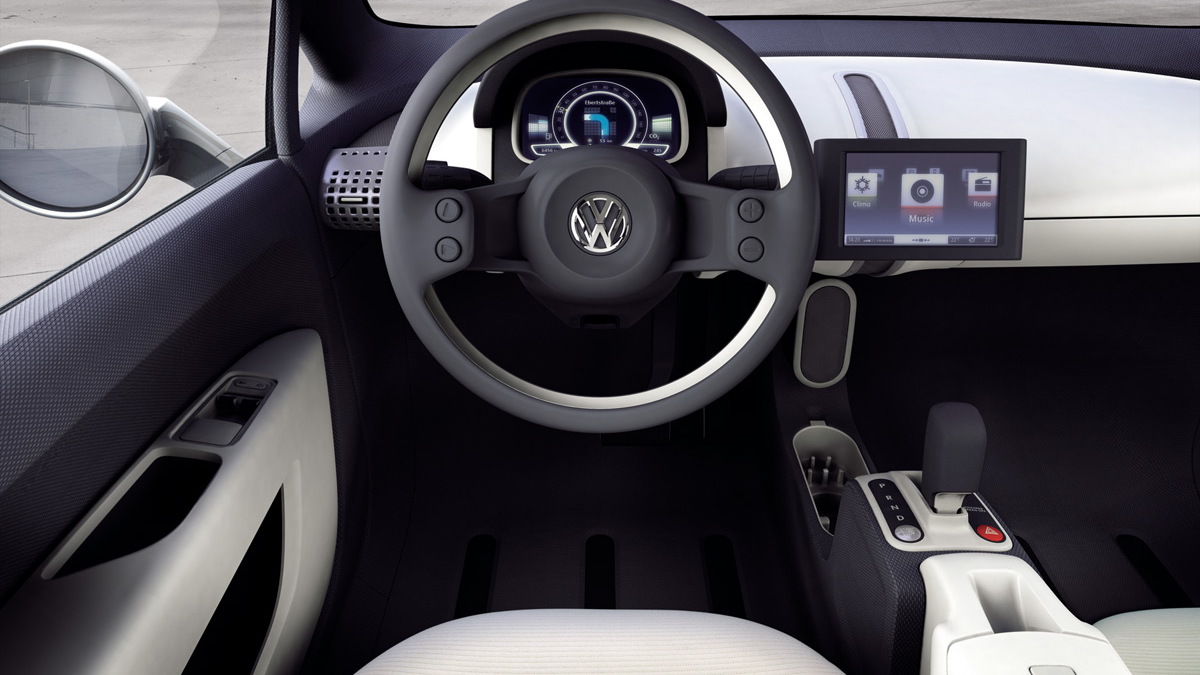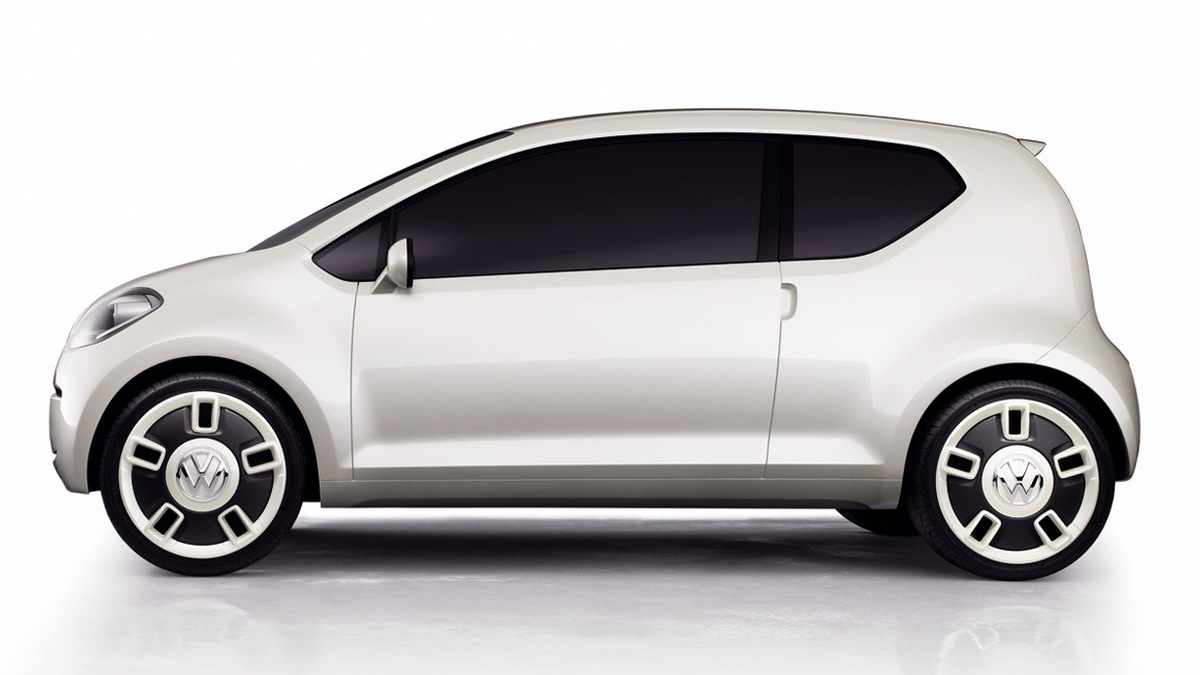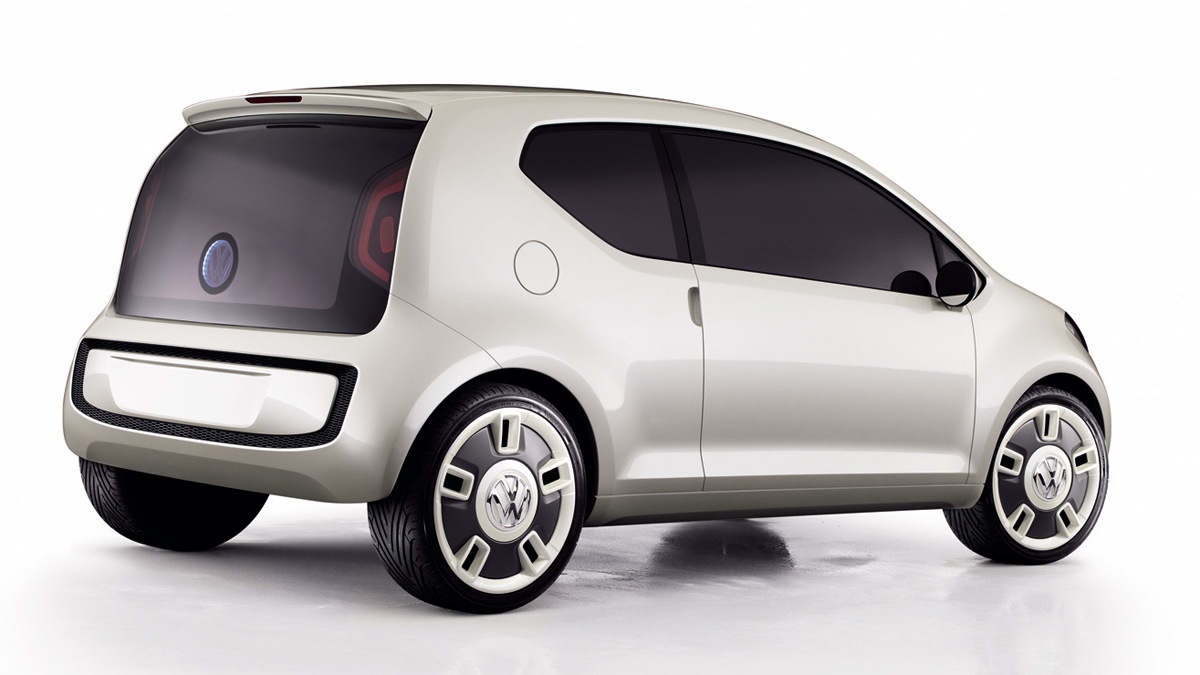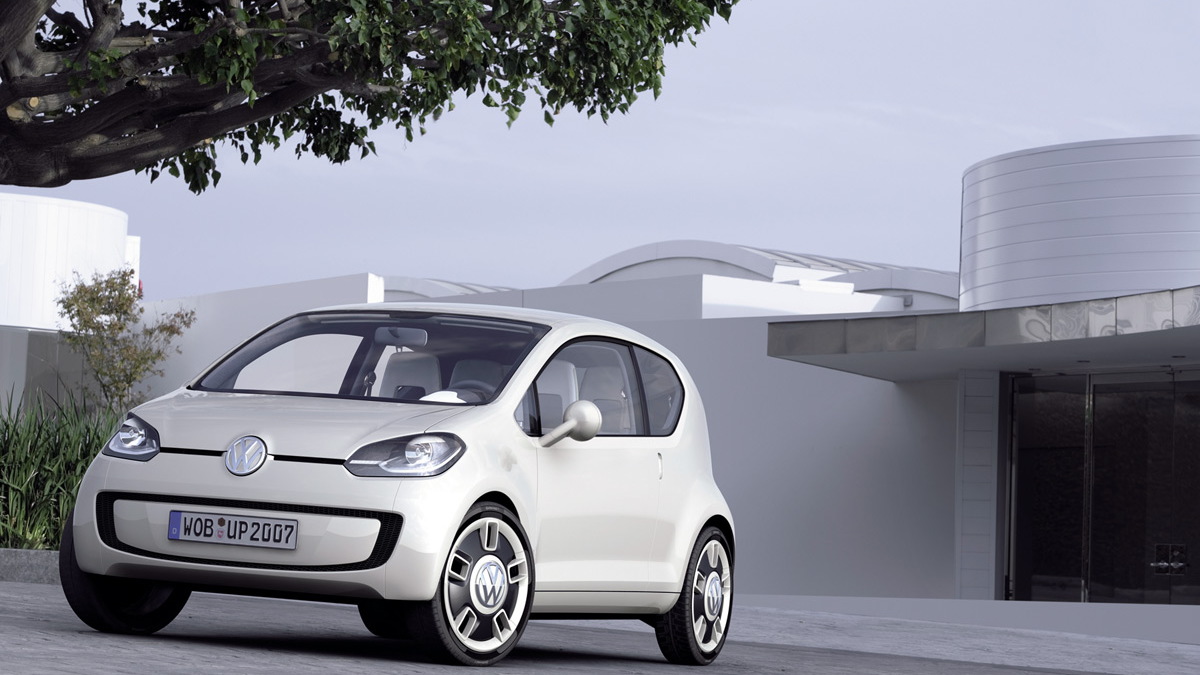The decision to switch the engine layout will also cause a delay of up to five months in development time, with the final version expected to debut now in early 2011, reports Automotive News. The delay means that rival minicars, including Toyota’s upcoming iQ and Fiat’s revived Topolino, will arrive on the market earlier than the VW.
Despite the production hurdles, VW is confident of selling up to half a million units of the up! each year and there are also plans for hatchback, minivan and sedan versions of the car for sale under the Skoda and Seat brands as well.
Original: The up! family of concepts, first shown at the Frankfurt Motor Show in 2007, has been widely accepted as the basis for the next generation of Volkswagen cars. The show version of the five-door space up! variant had been a rear-engine, rear-wheel drive car with a glass hatch over the powerplant. That design has been dropped in favor of a more production-friendly front engine, front-wheel drive design.
Sharing parts across multiple platforms makes expensive R&D projects easier to justify, since the cost can be spread over several models - but that only works if the cars use fundamentally similar designs. Trying to fit a rear-engine, RWD car into a lineup of front-front configurations simply won't pass the accounting department, no matter how cool it may look on the show floor. Accordingly, VW is packing in its return to placing the business end of its cars at the back and instead considering several of its smaller 1.2L powerplants for the nose of the new up! cars, according to the latest report from Autozeitung.
The little four-cylinder mill should be good for 55hp once a turbocharger is fitted, and such small displacement and minimal power ought to yield good fuel efficiency along with somewhat lackluster performance, even by city-car standards. The Smart ForTwo, for example, manages to wring at least 71hp out of its 1.0L three-cylinder engine, and it only seats two. The plug-in hybrid variant of the up! would make do with an even smaller engine to extend its battery-only range of 50km as far as 500km, though the torque available with electric motors might actually yield better driveability than the petrol version.






